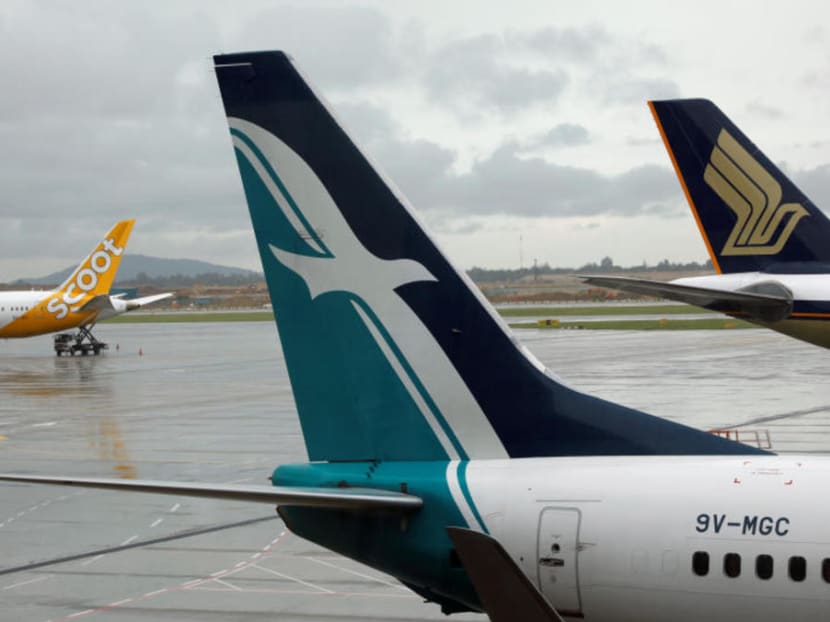With a long road to recovery, IATA urges governments to maintain financial aid for airlines
SINGAPORE — With international air travel unlikely to recover to pre-pandemic volumes until 2024, the International Air Transport Association (IATA) urged regional governments to offer more financial aid to their airlines, many of which could run out of cash in as little as four months.

IATA predicts that the regional air travel industry will not return to pre-pandemic volumes until 2024.
- The International Air Transport Association estimates that international air travel will recover only in 2024
- It expects Asia-Pacific airlines to post a US$31.7 billion loss in 2020
- An IATA official said he was not surprised by the postponement of the Singapore-Hong Kong travel bubble
SINGAPORE — With international air travel unlikely to recover to pre-pandemic volumes until 2024, the International Air Transport Association (IATA) urged regional governments to offer more financial aid to their airlines, many of which could run out of cash in as little as four months.
The global airline industry body on Wednesday (Nov 25) predicted a slow recovery for airlines, including those in the Asia Pacific. Domestic markets with short-haul routes of less than 5,500km will recover by end-2022, IATA estimates, while international markets will recover only by early 2024.
The bleak outlook shows the challenges that airlines face even when a vaccine becomes available. The estimates were based on IATA’s expectation that borders reopen next year with a combination of Covid-19 testing and the rollout of vaccines.
Mr Conrad Clifford, the regional vice-president for Asia Pacific with IATA, said: “The global industry is in dire straits.” He was speaking on Wednsday at a media briefing on the impact of Covid-19 on aviation in the region.
With the prolonged downturn in aviation, IATA expects Asia-Pacific airlines to post a US$31.7 billion (S$42.6 billion) loss in 2020 and a US$7.5 billion loss in 2021.
It expects airlines in North America to face a US$56.8 billion deficit and those in Europe to record a US$38.8 billion loss for the two-year period.
“What we’re really saying to governments around the world is that we need direct assistance to carriers as fast as possible, if they are to survive through to the restart of aviation,” Mr Clifford said.
As border closures brought international travel to a halt, Singapore Airlines (SIA) recorded its first full-year loss of S$212 million for the 12 months ending March 31, after staying profitable throughout its 48-year history.
The national carrier’s losses extended, reporting its worst quarterly loss on record — S$2.34 billion for the July-September quarter — after it was hit by a plunge in passenger numbers and impairments charges on older aircraft.
To shore up its balance sheet, SIA in March aimed to raise around S$15 billion by issuing shares to existing shareholders and mandatory convertible bonds, with state investor Temasek Holdings pledging to mop up any remaining unsubscribed shares and bonds.
The Singapore Government has also pledged its utmost support for the aviation sector, through wage subsidies, rebates on aircraft parking charges and other relief measures.
It has also set aside an extra S$187 million to be injected starting this month into the ailing industry through the Enhanced Aviation Support Package.
IATA is calling for governments around the world to continue their financial relief measures to sustain these airlines.
Costs such as airport and air navigation service provider charges, fuel fees and taxes need to be kept low, it added.
TRAVEL BUBBLES
Mr Clifford urged governments to replace their quarantine regimes with widespread testing programmes.
“At the moment, we have standard 14-day quarantines in many countries across our region. And if those quarantines continue, we will see a continuation of the current 90 per cent reduction in traffic.”
Many governments, he said, tend to focus on reaching zero cases of Covid-19 before reopening borders.
However, if they can find another region where the rate of transmission is similar, borders can be reopened without travellers serving quarantine.
The authorities in Singapore gave the same reasoning when announcing its travel bubble with Hong Kong, where travellers take Covid-19 tests in place of quarantine.
The arrangement was postponed for two weeks last Saturday, the day before it was set to launch, after Hong Kong recorded a rise in Covid-19 cases.
Mr Clifford said he was not surprised by the deferment of the travel bubble, given that governments often close and reopen their borders based on the evolving situation in the region.
Despite the delay, he said he is hopeful that the Singapore-Hong Kong travel bubble will be an opportunity to show other governments how borders can safely be reopened.
“Of course, it’s a pity. But I guess we’re encouraged by the fact that both governments are intending to relaunch (the travel arrangement).”








